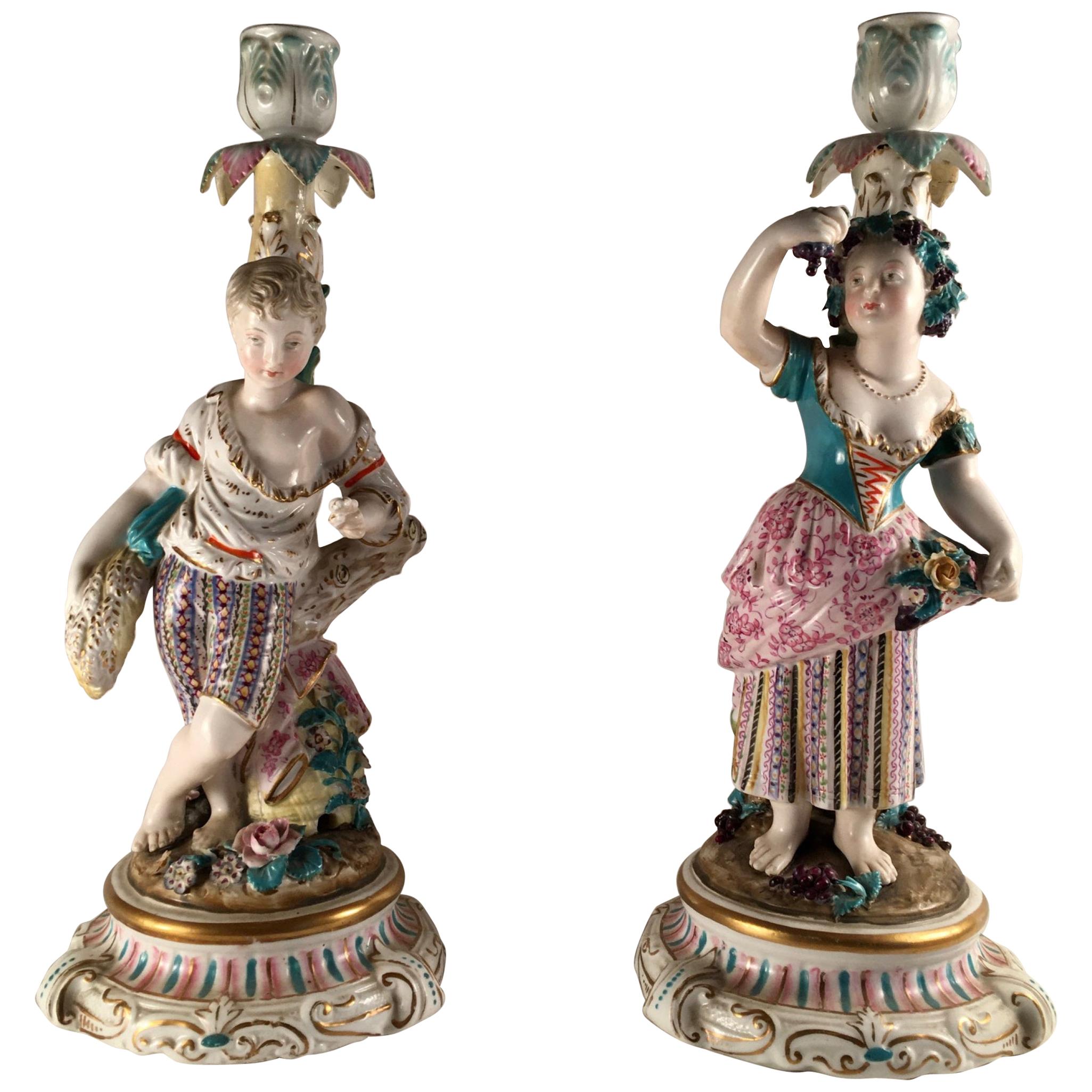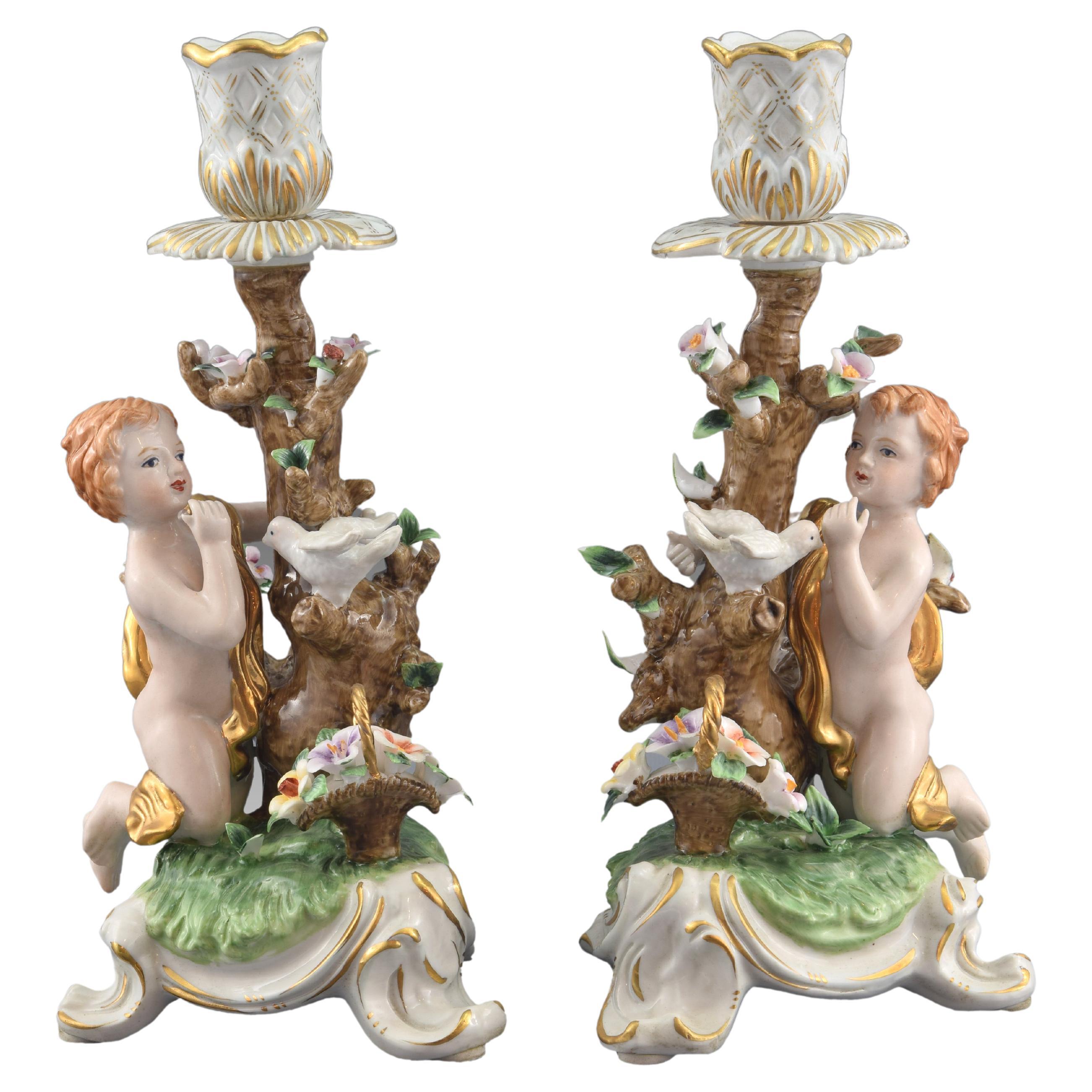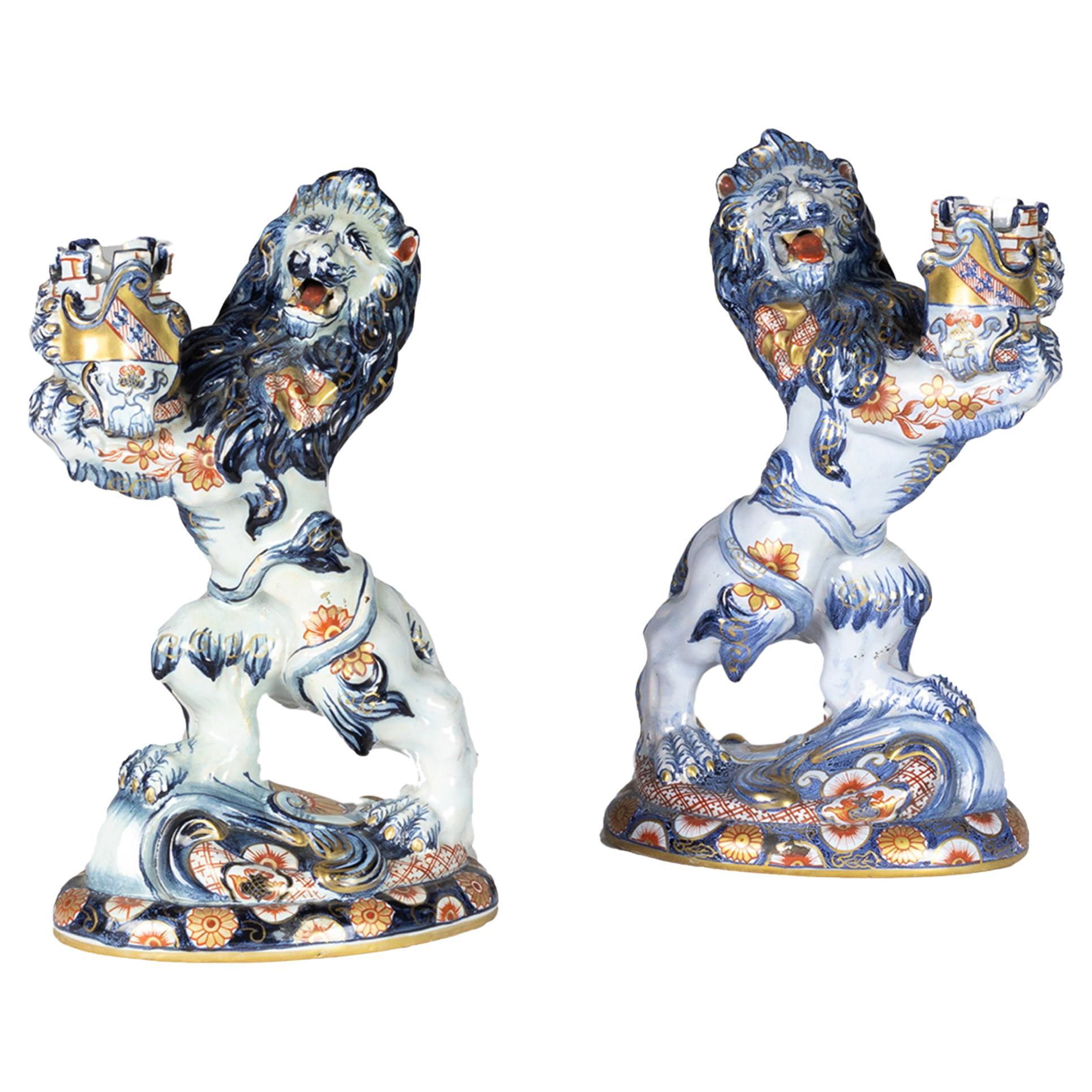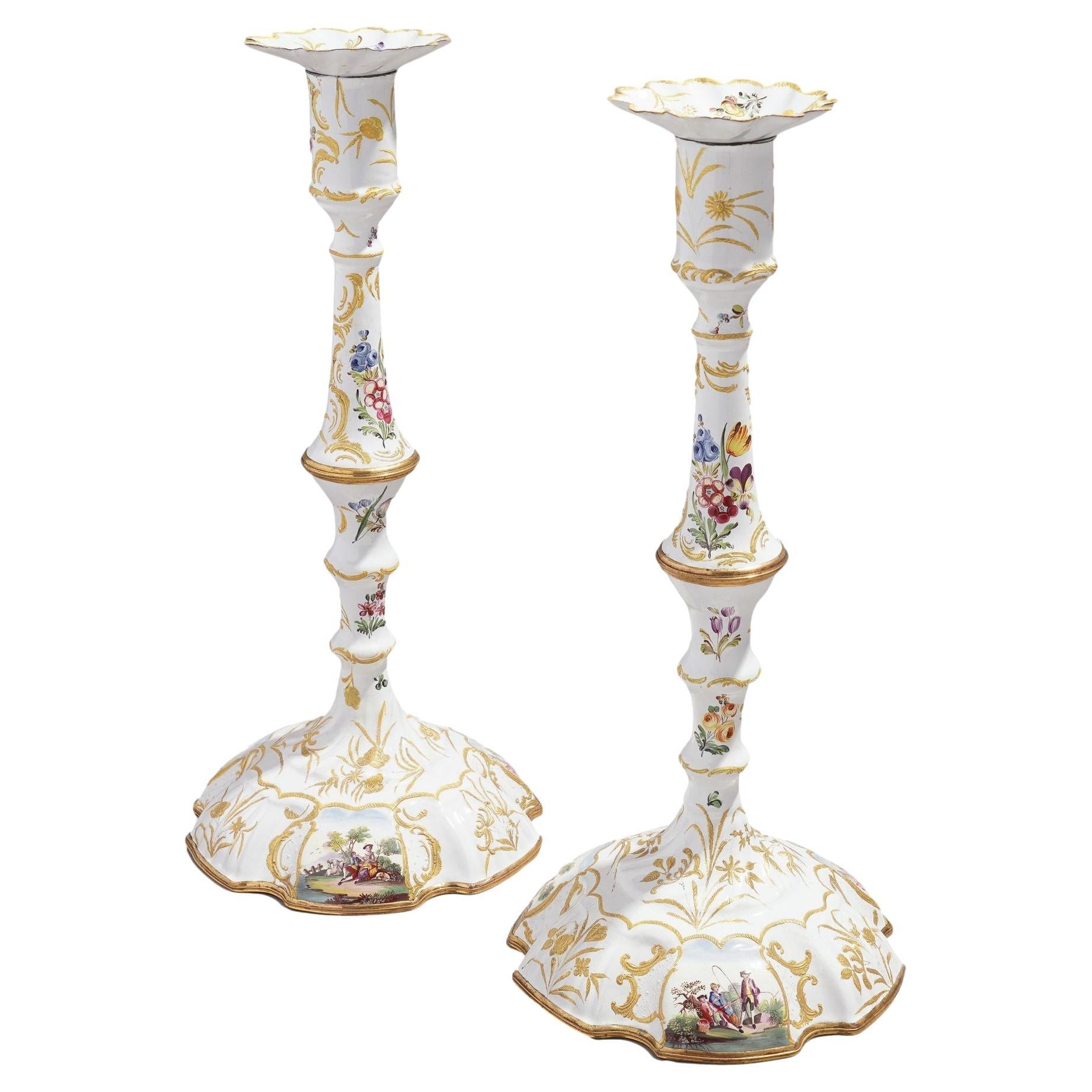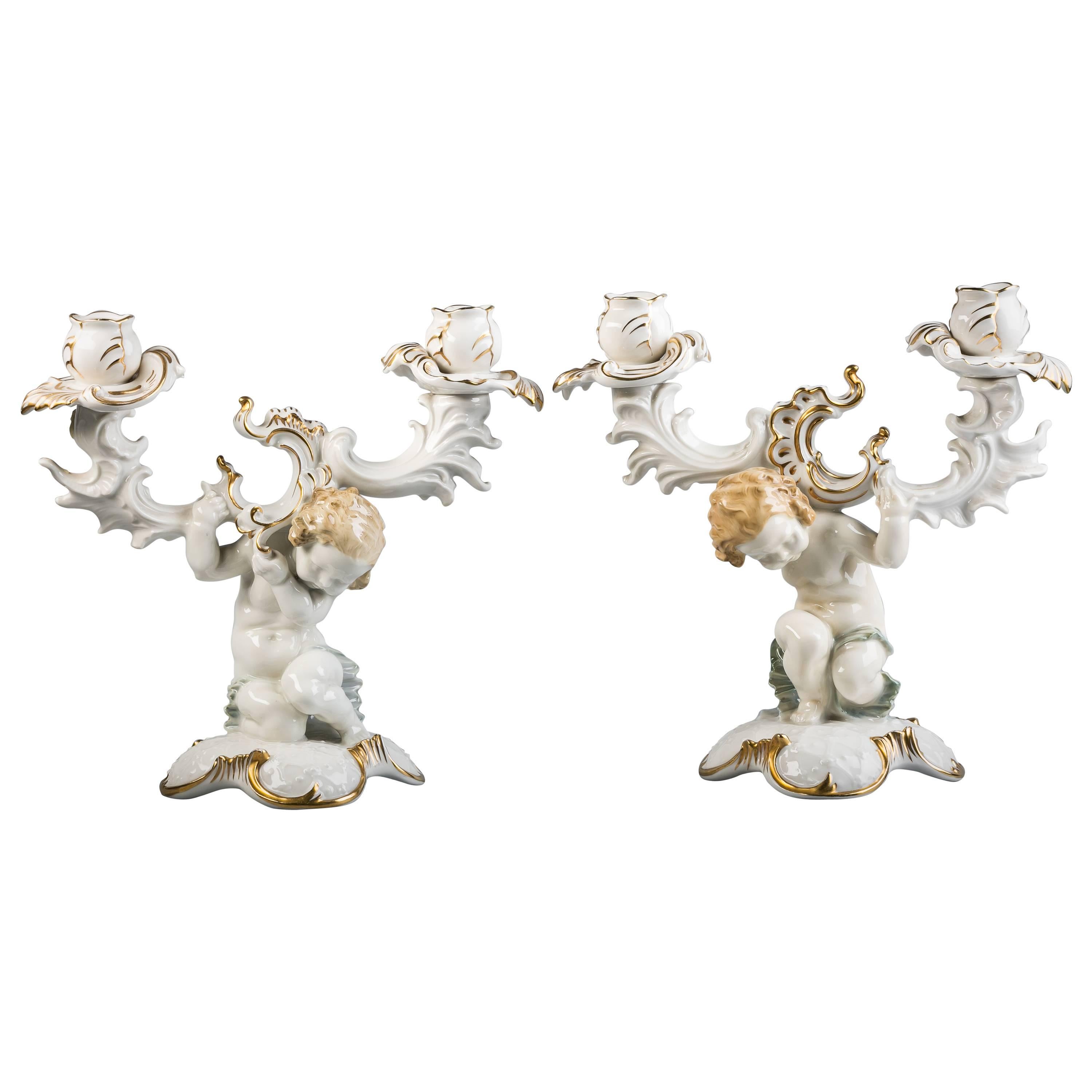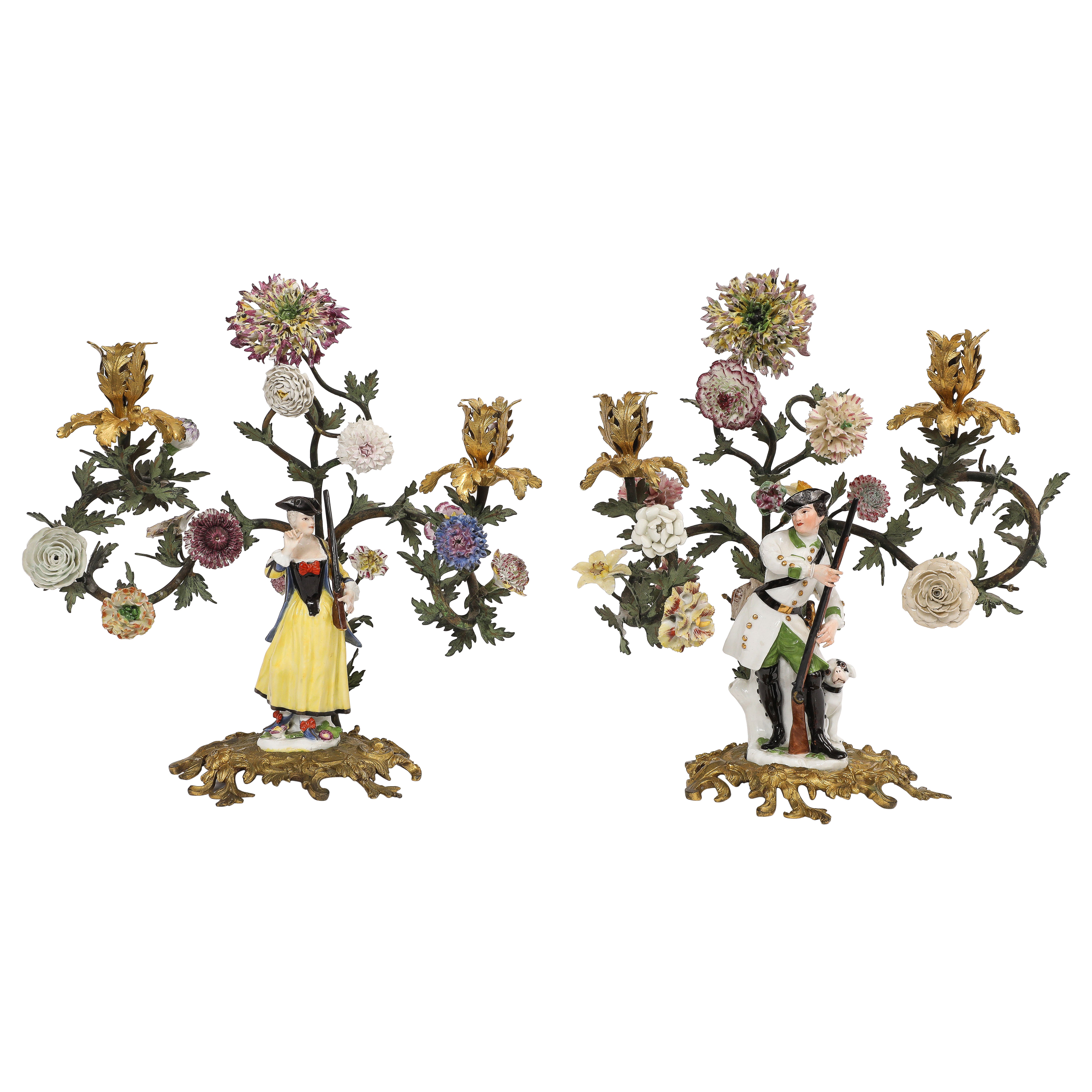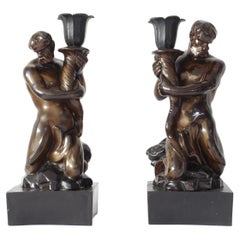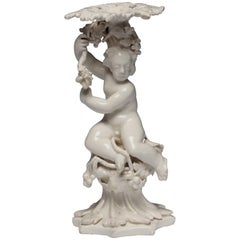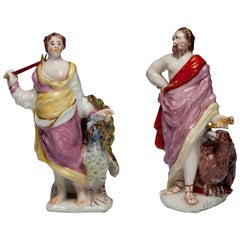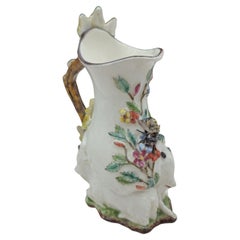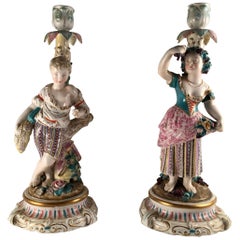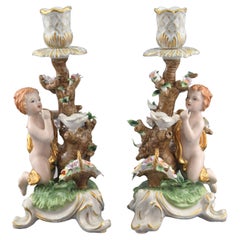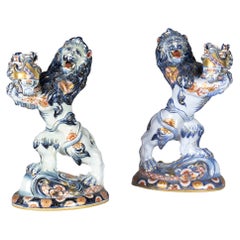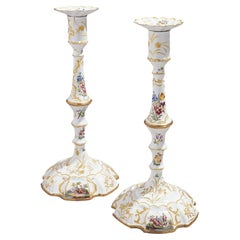Items Similar to Pair of Bocage Candlesticks, Putti and Goats. Bow 1766
Want more images or videos?
Request additional images or videos from the seller
1 of 19
Pair of Bocage Candlesticks, Putti and Goats. Bow 1766
$13,500per set
£10,238.89per set
€11,759.77per set
CA$19,340.63per set
A$21,292.59per set
CHF 10,882.69per set
MX$254,132.84per set
NOK 138,559.88per set
SEK 129,661.16per set
DKK 87,838.65per set
About the Item
A rare, possibly unique, pair of candlesticks in the form of putti, representing The Four Seasons. This is the pair pictured in Stonor’s book (#94); we’ve been unable to locate another complete pair.
There are four putti in all, each representing one of the Four Seasons. The goats provide a link to Bachus, and symbolise joy and prosperity, all the year round.
The pair is also unusual for having its full bocage. This would have been made by a jeweller, working with metal and porcelain flowers from various makers. The effect of these large and unusually complete candle holders is quite stunning. They are the height of Rococo design.
Provenance: Taylor Collection, from Peter Foster; Stonor & Evans, NY; Leyland LeGanke.
- Creator:Bow Porcelain (Manufacturer)
- Dimensions:Height: 13 in (33.02 cm)Width: 9.5 in (24.13 cm)Depth: 4 in (10.16 cm)
- Sold As:Set of 2
- Style:Rococo (Of the Period)
- Materials and Techniques:Porcelain,Molded
- Place of Origin:
- Period:
- Date of Manufacture:circa 1766
- Condition:Repaired: One with restoration to base, visible from underneath but not when on display. At least one flower a replacement but mostly they have survived well. Usual restoration to edge chips and such. Wear consistent with age and use.
- Seller Location:Melbourne, AU
- Reference Number:Seller: 51791stDibs: LU3151314089071
About the Seller
5.0
Vetted Professional Seller
Every seller passes strict standards for authenticity and reliability
Established in 2005
1stDibs seller since 2017
80 sales on 1stDibs
Typical response time: <1 hour
- ShippingRetrieving quote...Shipping from: Melbourne, Australia
- Return Policy
Authenticity Guarantee
In the unlikely event there’s an issue with an item’s authenticity, contact us within 1 year for a full refund. DetailsMoney-Back Guarantee
If your item is not as described, is damaged in transit, or does not arrive, contact us within 7 days for a full refund. Details24-Hour Cancellation
You have a 24-hour grace period in which to reconsider your purchase, with no questions asked.Vetted Professional Sellers
Our world-class sellers must adhere to strict standards for service and quality, maintaining the integrity of our listings.Price-Match Guarantee
If you find that a seller listed the same item for a lower price elsewhere, we’ll match it.Trusted Global Delivery
Our best-in-class carrier network provides specialized shipping options worldwide, including custom delivery.More From This Seller
View AllPair of Triton Candlesticks. Palmer C1780.
By Palmer
Located in Melbourne, Victoria
An exceptionally rare pair of Triton candlesticks, in black basalt with gold lustre. The design is copied from Wedgwood, who took it from Sir Willi...
Category
Antique Late 18th Century English Neoclassical Ceramics
Materials
Stoneware
$6,000 Sale Price
20% Off
Cherub Candlestick, in the White, Bow Porcelain Factory, circa 1750
By Bow Porcelain
Located in Melbourne, Victoria
This example illustrated Tilley 1957, Pl. LXVII, #203 who, p.127, also draws attention to the similarity of the modelling of the figure and the Bow Mongolian busts, and their similar...
Category
Antique Mid-18th Century English Neoclassical Porcelain
Materials
Porcelain
$7,000 Sale Price
30% Off
Pair of figures: Jupiter and Juno, or Zeus and Hera. Bow Porcelain C1752
By Bow Porcelain
Located in Melbourne, Victoria
She stands barefoot, wearing a long-sleeved robe in white, deep pink and washed pale yellow and partly edged with gold; a red and gilt-topped sceptre in her right hand, an outsize pe...
Category
Antique 1750s English Neoclassical Porcelain
Materials
Porcelain
Polychrome Goat & Bee Jug, Chelsea, circa 1748
By Chelsea Porcelain
Located in Melbourne, Victoria
One of the most iconic of all the Chelsea shapes, the Goat & Bee jug. This is the item that, more than any other, has been chosen for the front cover of scholarly works on Chelsea, o...
Category
Antique Mid-18th Century English Rococo Porcelain
Materials
Porcelain
Near Pair of Baluster Shape Vases, Chelsea, circa 1755
By Chelsea Porcelain
Located in Melbourne, Victoria
Baluster shaped vase in soft paste porcelain with early gilt line decoration. Superb flower painting.
The shapes are very close, and the gilding is slightly more elaborate on the se...
Category
Antique Mid-18th Century English Neoclassical Porcelain
Materials
Porcelain
Pair of Lions. Bow Porcelain C1750
By Bow Porcelain
Located in Melbourne, Victoria
An attractive pair of lions, in the white; possibly based on a Chinese original.
Category
Antique Mid-18th Century English Neoclassical Porcelain
Materials
Porcelain
$17,000 / set
You May Also Like
Pair of Porcelain Rococo Style Figural Candlesticks, ca. 1850
Located in Vero Beach, FL
Pair of Porcelain Rococo style figural candlesticks ca. 1850
This pair of large and lovely candle holders is hand painted in exquisite detail and highlighted in gold. The enamel d...
Category
Antique 19th Century German Rococo Candlesticks
Materials
Porcelain
$1,200 Sale Price
20% Off
Pair of Porcelain Candleholders, after Models from Sèvres, France
Located in Madrid, ES
"Children and pigeons." Inspired by models from the Manufacture Nationale de Sèvres (France).
The shape of the bases brings the works closer to examples related to the Rococo. The ...
Category
20th Century European Rococo Porcelain
Materials
Porcelain
Pair of Ceramic Candle Holders, Lions By Emile Gallé, 19th Century
By Émile Gallé
Located in Lisbon, PT
This pair of faience lion candleholders, crafted circa 1880 by the renowned French artist Émile Gallé, exemplifies the bold spirit and refined artistry of late 19th-century decorativ...
Category
Antique 19th Century French Rococo Revival Candlesticks
Materials
Ceramic
$6,888 Sale Price / set
25% Off
Pair of English Rococo Battersea candlesticks, c. 1760-65
Located in Kenilworth, IL
Pair of rare and exceptionally tall polychrome decorated Rococo Battersea candlesticks. The pair features a white enamel ground over copper, and ...
Category
Antique 1760s British Candlesticks
Materials
Copper, Enamel
Pair of German Porcelain Two-Light Figural Candelabra, circa 1920
Located in New York, NY
Hutchenreuther.
Art Nouveau.
Category
Early 20th Century German Candelabras
Materials
Porcelain
Pair of 18th Century Meissen Porcelain Figural & Ormolu Mounted Candelabras
Located in New York, NY
Pair of 18th Century Meissen Porcelain Figural and Ormolu Mounted Candelabras with Raised 18th Century Meissen Porcelain Flowers. This pair of figural groups of Hunter and Huntress ...
Category
Antique 1760s Porcelain
Materials
Bronze
More Ways To Browse
18th Century Bow Porcelain
Porcelain Putti
Peter Evans
Bjorn Wiinblad Plate
Turkey Porcelain
18th Century Worcester Porcelain
Bird Porcelain Plate
Green Porcelain Plate
Porcelain Compote
Porcelain Espresso Cup And Saucer
Bavarian Furniture
Danish Christmas
Silver Milk Jug
Wedgwood Hand Painted
Chinese Silver Cup
English Derby
Kakiemon Porcelain
Meissen Kandler
